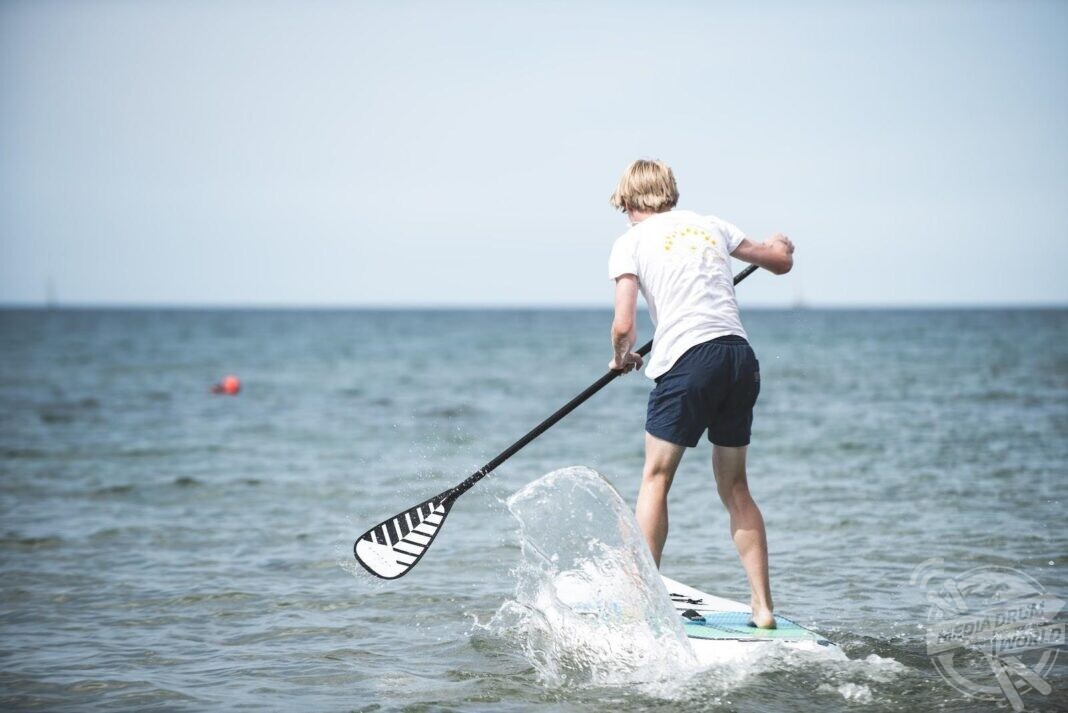Paddleboarding, also called stand-up paddleboarding (SUP), is a great water sport that has exploded in popularity. For this reason, it has attracted a lot of beginners who have little or no experience when it comes to safety.
Paddleboarding safety is an essential topic that, in most cases, doesn’t get the coverage it truly deserves. It’s vitally important that we all play our part in educating the beginners on basic SUPing safety practices. Below are intriguing tips to help you maximize your paddleboarding safety:
Check the Conditions
It’s essential to know the conditions before you set out. Understanding the water conditions or the forecast will keep you aware of any possible changes that may arise. When standing on the SUP board, your body acts like a sail in the wind meaning strong winds are likely to steer your board towards any direction. This can make it harder to paddle and propel yourself in your aspired direction, especially as a beginner.
The most important safety measure to take is minding the wind condition and avoiding riding waves you can’t handle. If you’re ever caught amid unfavorable wind conditions, get low and lay on your board with your SUP paddle tucked under your belly and paddle with hands like a regular surfboard.
Caution: Before hitting the water, be sure to find out the water conditions and obtain a precise weather forecast for that day. Also, remember to ride on the waves you can handle effortlessly.
Personal Floatation Device (PFD) or Life Jacket
Many new paddlers overestimate their swimming skills and disregard this essential safety item. Wearing a personal floatation device or a life jacket is something you should never, ever neglect when paddling out. As a new paddler, you’re prone to falling before becoming perfect, but you don’t have to worry about drowning with a PFD or life jacket.
When it comes to floatation, life jackets are a great choice because they’re inherently floatable and don’t require any action from you to activate, like with PFD. On the other hand, you won’t have to worry about purchasing some replacement CO2 cartridges that can be expensive.
However, life jackets can be somehow bulkier, making you uncomfortable and tamper with your paddling strokes. To avoid this, we’d recommend a life jacket with a slimmer and streamlined fit.
Use a SUP Ankle Leash
Tethering yourself on your SUP board with a leash is a fundamental safety part you shouldn’t forget when paddleboarding. Your board will become your life-saving equipment if you fall, get tired, or find yourself a little too far from the shore. If you’re not tethered to your board, you can easily lose it after falling mostly in stormy or windy conditions.
Whatever type of leash you choose, the crucial thing is getting a high-quality and reliable board leash that won’t break off. When purchasing your leash, also ensure it can be quickly detached. This will allow you to effortlessly free yourself if your board gets pulled by powerful waves or when you get entangled by underwater plants.
Fall off the Board the Right Way
Falling off the board while paddling is a common thing to both beginners and pros as well. But all that matters is how you fall! Just like you can take time to practice paddling tricks, practicing falls or being aware of how to fall safely can prevent an injury during your session.
Paddleboards are large and can hurt when they hit you, and you don’t wanna cut your session short because of an injury. So when you fall, it’s always crucial to ensure you fall away from your board. The most exciting thing is that you won’t lose your board because you’re tethered to it with your leash. Falling the right way will let you fall gracefully without being hurt by your board or the fins.
Hold the SUP Paddle Correctly
This sounds obvious to mention but holding your paddle the right way will help you ride safely and smoothly. The way you handle your paddle can easily hurt your shoulder or harm your spine when done incompetently.
Incorrect paddle holding is a common mistake done by beginners, but you can avoid it by practicing it more. Proper paddle holding will save you from injuries and make your ride safe, comfortable, and fulfilling.
Ensure the Board is Properly Inflated
It’s essential to pump in pressure and ensure your board is adequately inflated before hitting the water. A properly inflated board will not only maximize your safety but will also perform better and create a more sturdy platform for you to paddle on.
Take a Friend
There are several dangers associated with attempting any water sport alone. A lot of solo water adventures have unhappy endings, such as drowning and getting lost or injured, but they can all be avoided by having a companion or a group.
Whether you’re a beginner or a pro, paddleboarding will be more fun and a lot safer when done with a friend or a group, as you can look out for each other.
Bottom Line
We hope that our paddleboarding safety tips were helpful. These actionable and easy-to-follow tips will help you to practice paddleboarding safely and effortlessly. Always put safety first to make your SUPing fun and memorable.
Source





